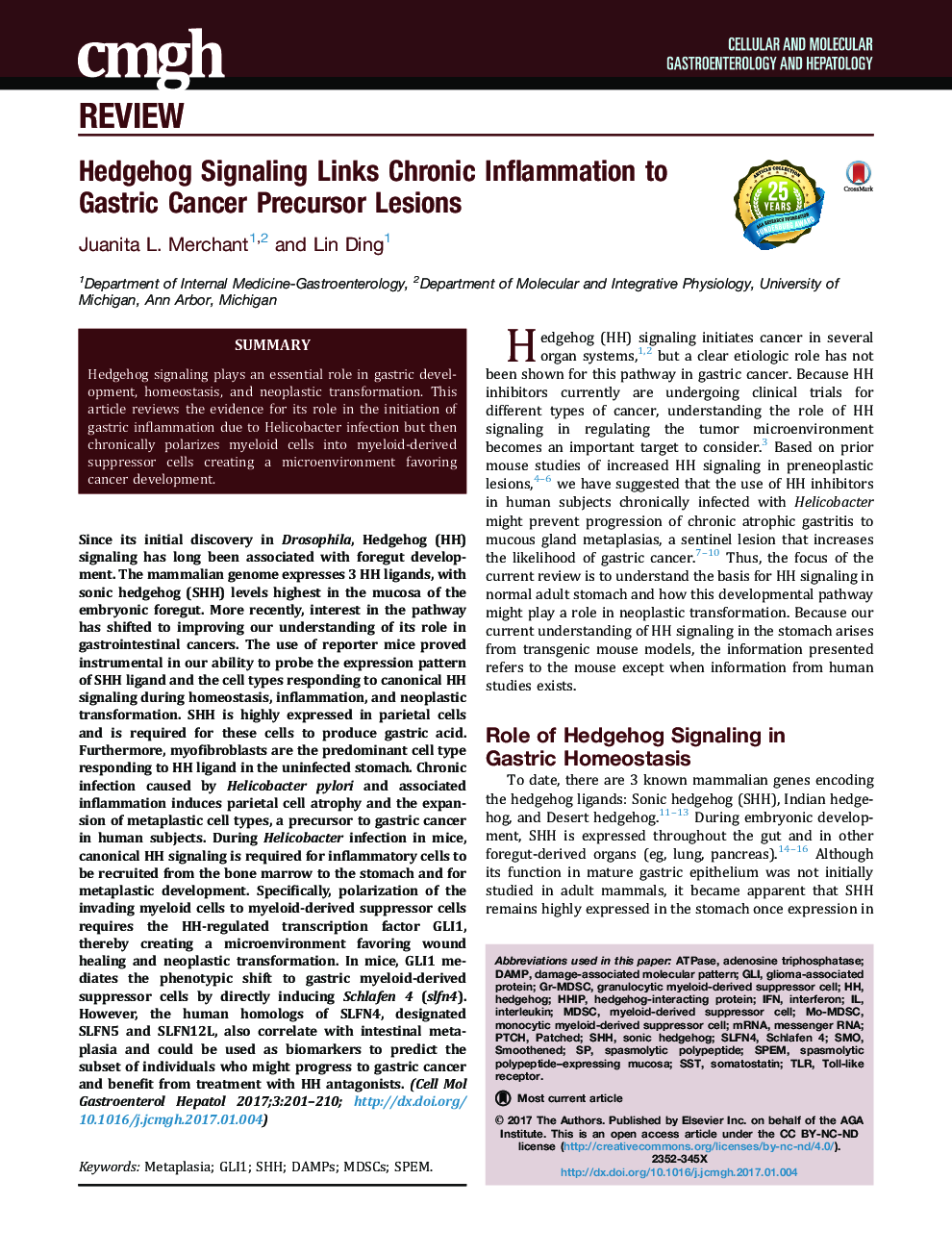| کد مقاله | کد نشریه | سال انتشار | مقاله انگلیسی | نسخه تمام متن |
|---|---|---|---|---|
| 5517290 | 1400959 | 2017 | 10 صفحه PDF | دانلود رایگان |
Since its initial discovery in Drosophila, Hedgehog (HH) signaling has long been associated with foregut development. The mammalian genome expresses 3 HH ligands, with sonic hedgehog (SHH) levels highest in the mucosa of the embryonic foregut. More recently, interest in the pathway has shifted to improving our understanding of its role in gastrointestinal cancers. The use of reporter mice proved instrumental in our ability to probe the expression pattern of SHH ligand and the cell types responding to canonical HH signaling during homeostasis, inflammation, and neoplastic transformation. SHH is highly expressed in parietal cells and is required for these cells to produce gastric acid. Furthermore, myofibroblasts are the predominant cell type responding to HH ligand in the uninfected stomach. Chronic infection caused by Helicobacter pylori and associated inflammation induces parietal cell atrophy and the expansion of metaplastic cell types, a precursor to gastric cancer in human subjects. During Helicobacter infection in mice, canonical HH signaling is required for inflammatory cells to be recruited from the bone marrow to the stomach and for metaplastic development. Specifically, polarization of the invading myeloid cells to myeloid-derived suppressor cells requires the HH-regulated transcription factor GLI1, thereby creating a microenvironment favoring wound healing and neoplastic transformation. In mice, GLI1 mediates the phenotypic shift to gastric myeloid-derived suppressor cells by directly inducing Schlafen 4 (slfn4). However, the human homologs of SLFN4, designated SLFN5Â and SLFN12L, also correlate with intestinal metaplasia and could be used as biomarkers to predict the subset of individuals who might progress to gastric cancer and benefit from treatment with HH antagonists.
Journal: Cellular and Molecular Gastroenterology and Hepatology - Volume 3, Issue 2, March 2017, Pages 201-210
